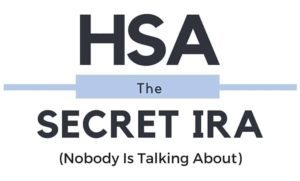QHFD: Qualified HSA Funding Distribution
QHFD (Qualified HSA Funding Distribution). What a fun term.
If you are less than 59 years old and have an HSA, consider funding it with your IRA. Especially if an inherited IRA or there is basis in the IRA. In short, use your IRA to fund your HSA.
Once in your life, the IRS allows you to get Income in Respect to the Decedent out of your IRA and into your “stealth” IRA: your HSA. What is a Qualified HSA Funding Distribution?
What is a Qualified HSA Funding Distribution (QHFD)?
The IRS gives you a once-in-a-lifetime opportunity to make a qualified HSA funding distribution. The instructions are on line 10 of Form 8889.
This is a direct trustee-to-trustee transfer of your IRA into an HSA. You don’t include this funding in your income, it is not deductible, and it reduces the amount you can contribute to your HSA from other sources (including employer contributions).
The advantages: This will reduce the required minimum distributions by about $300 in the first year you take RMDs. The most significant benefit is taking pre-tax money into tax-free money.
Of course, this presumes you use the HSA to invest rather than as a slush fund for your qualified healthcare expenses.
QHFD Rules
There are QHFD rules to follow, such as:
- It must be a direct trustee-to-trustee transfer and not a rollover
- You must remain eligible for more than 12 months after the transfer (known as the testing period)
- Usual contribution limits apply (in 2023, are $3,850 for an individual and $7,750 for a family with a $1,000 catch-up if older than 55)
Why do a QHFD When Younger than 59?
IRAs have a 10% early withdrawal penalty if you take the money out before 59.5 years. You have access to this money without penalty after that age, but you must pay taxes.
If you are older than 59.5 years, you can withdraw money from an IRA while you put money into your HSA and deduct it. A wash.
But doing a QHFD when younger than 59.5 gives you penalty-free access to an IRA to fund your HSA.
This is a good option, but using an Inherited IRA may be even better.
Why Inherited IRAs to fund QHFDs?
Inherited IRAs, of course, have RMDs. You can take part of your RMD out and not pay taxes if you use the money to fund a QHFD. If you have a high-income year, using your inherited IRA to fund a QHFD may be especially beneficial.
What about Basis and HSFD HSA
The cream-in-the-coffee rule discusses why the pro-rata rule ruins Roth conversions. One way to get the cream out of the coffee is a QHFD.
Since HSAs only accept the taxable portion of your IRA, you can pull this part out of a mixed IRA and leave your basis behind. The basis is not eligible for QHFD, so you can do a Roth conversion on the money left behind and not worry about the pro-rata calculation if only basis is left.
Remaining Questions
Are QHFDs useful in California, where you can’t deduct the HSA?
What about if you are an employer in the plan and cannot deduct an HSA contribution?
Summary- QHFD HSA Rules
Once in your life, you can reduce RMDs and fund your HSA with a touch of your pre-tax money. Take the money you would pay taxes on and turn it tax-free!
This might be useful for a few people once in a blue moon. This is great for basis in your IRA or if you have an inherited IRA. As far as inherited HSAs go, remember, don’t die with your HSA!
Make sure you do a QHFD once in your lifetime.
And don’t forget the HSA and Medicare Penalty!
